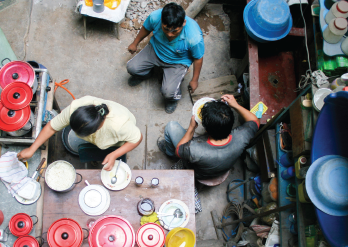
Ruslana Iurchenko / shutterstock.com
Indigenous communities in Latin America lack good healthcare—and often lack any healthcare—for musculoskeletal and rheumatic diseases.1 Global health initiatives tend to focus on infectious disease, despite the increasing rate of chronic diseases.
In a survey of 6,155 individuals from eight indigenous communities, conducted by a team of Latin American investigators, the prevalence of these conditions was 34.5%. The research was published July 14, 2018, in Annals of the Rheumatic Diseases.1
“That’s a higher prevalence than anywhere in the world, and it’s higher in a younger population,” says Leigh F. Callahan, PhD, noting the mean age of study subjects was 41.2 years. “I think the reason for this high rate is that these indigenous individuals have very low levels of socioeconomic status, which is well known to correlate with disease prevalence, morbidity and mortality.” Dr. Callahan, who was not involved in the study, is the Mary Link Briggs distinguished professor of medicine, and associate director, Thurston Arthritis Research Center, the University of North Carolina, Chapel Hill.
The study authors (Peláez-Ballestas et al.) note that indigenous communities seeking healthcare face “geographical and linguistic barriers, low social support and a paucity of healthcare policies for providing culturally sensitive care.”
In a quest to better understanding the toll taken by musculoskeletal diseases, and the causes of those diseases, Peláez-Ballestas et al. took a syndemic approach—first proposed March 2017 in a dedicated issue of Lancet.2
The syndemic approach posits “the interaction of two or more biological diseases, in different sociocultural situations and in the context of varying healthcare standards, exacerbates their deleterious effects on the health of individuals, communities, and societies,” the authors write.
The challenge was to find a way to measure the combined impact of multiple comorbidities, such factors as drinking, smoking, socioeconomic status and education level, and other influences on the severity of rheumatic diseases. To that end, the team enlisted a computational sciences expert, Alfonso Gastelum-Strozzi, PhD, research associate, Department of Instrumentation and Measurement Universidad Nacional Autónoma de México, Mexico City. He proposed doing a “network analysis”—a new technique—as a way to study the relationships among the influencing factors, and to visually represent those relationships.
The investigators used the cross-culturally validated Community Oriented Program for Control of Rheumatic Diseases (COPCORD) questionnaire to identify probable cases of rheumatic disease. These cases were then diagnosed by general practitioners and rheumatologists. “The questionnaire explored [musculoskeletal] symptoms (e.g., pain, stiffness, disability), treatments, coping mechanisms and the process of seeking [treatment with] biomedical and/or traditional medicine,” according to the report. The investigators defined positive cases as musculoskeletal pain in any region during the past seven days, or at least once during a lifetime.

